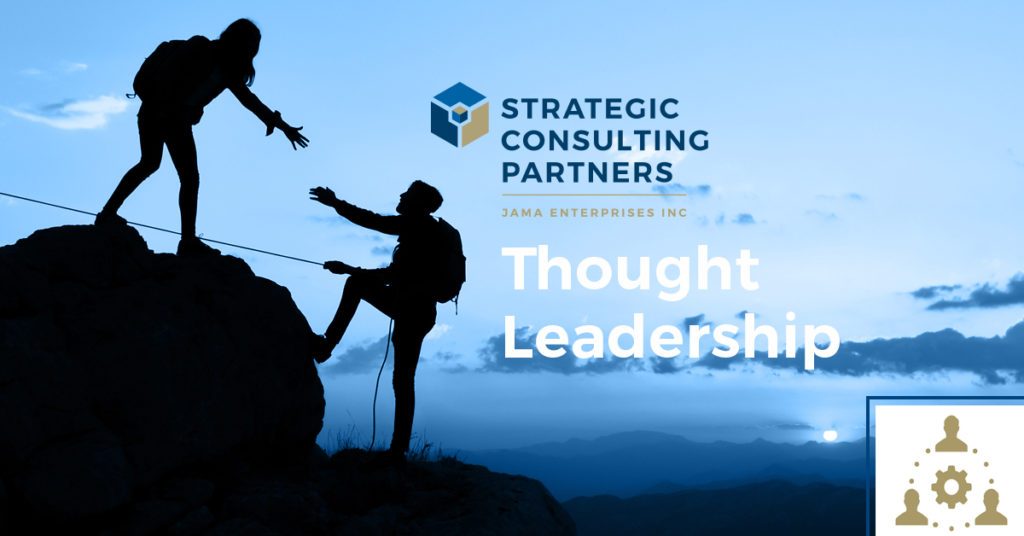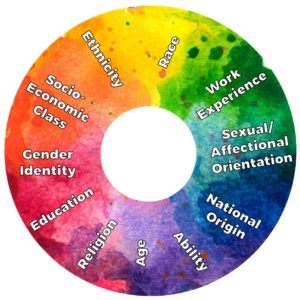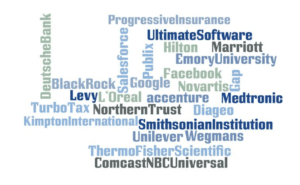Are You Doing Enough to Ensure a Diverse and Inclusive Workplace?
Jun 10, 2019 | Thought Leadership

Diversity and Inclusion Are Hot Topics
Google the phrase “diversity and inclusion” and – in a split second – 228,000 results are delivered. Perhaps there is so much content available because there are thousands of organizations implementing internal diversity and inclusion programs, as well as thousands of external training specialists and consulting firms that are also designing and delivering such programs. Click on some of the search results and you’ll see how-to stories, success stories, tales of epic failures and lists of mistakes that organizations make in assessing their own state of affairs. Or maybe there is so much content available simply because organizations have been working for more than forty years to achieve diverse and inclusive workplaces.
Benefits of a Diverse and Inclusive Culture Fuel Demand
Articles and case studies about large corporations that have successfully achieved and maintained a diverse and inclusive culture cite the benefits they have realized, which include better employee engagement, lower rates of turnover, better financial performance and more-efficient problem resolution because of the collaborative spirit and “diversity of thought” within teams.
One study after another has shown that companies with more diverse teams have stronger financial performance.
Forbes, Jan. 23, 2018
Learning about the benefits of a diverse and inclusive culture at successful organizations inspires others to examine their own operations and identify opportunities to improve performance. Among the companies that have successfully created a diverse and inclusive culture are those shown below:
So Much Progress, but Still So Much to Do
The mere fact that diversity and inclusion programs have been around for forty years points to the difficulty in achieving a diverse and inclusive workplace; for if achieving diversity and inclusion in the workplace was an easy-to-achieve goal, there would not be such deep, continuing interest in strategies, implementation plans, and training programs to ensure diversity and inclusion. (And there would likely not be 228,000 “diversity and inclusion” search results.)
A recent Boston Consulting Group study found that the vast majority (96% to 98%) of companies with 1,000 or more employees are investing in such programs, yet despite the resources devoted to diversity and inclusion programs, almost 75% of employees in underrepresented groups (specifically, women, racial and ethnic minorities, and LGBTQ employees) say they have not benefited personally from these programs (Harvard Business Review, February 5, 2019).
So, why the disconnect? If there’s so much attention being paid to diversity and inclusion initiatives, why do employees from diverse backgrounds feel they are not personally benefitting from the programs?
Obstacles to Achieving Diversity and Inclusion
Over the course of 24 years serving the unique needs of our clients – including local, state and federal government agencies, corporations, and nonprofit organizations – we have witnessed growing demand for in-depth, current-state studies to identify gaps between what organizations are doing to ensure diversity and inclusion in the workplace and what they are actually achieving.
The experience we have gained by helping organizations perform optimally has taught us that achieving a diverse and inclusive workplace is complicated; it’s not simply a matter of conducting a bit of internal research, implementing a training program, and following up with an annual “refresher” course. Rather, diversity and inclusion programs must be actively managed to ensure that real benefits occur – real benefits that can be measured and sustained over time.
Cultural shifts within organizations do not happen overnight. Achieving and maintaining a diverse and inclusive workforce is a multi-faceted, multi-dimensional endeavor that takes buy-in from the top down and encourages involvement from the bottom up. Programs to increase diversity and inclusion cannot be designed and implemented and then left on their own to succeed. Instead, diversity and inclusion should be intertwined into the very fabric of an organization’s mission, strategies, and best practices.
Because they can be challenging to design, implement and manage over time, many organizations choose to take a soft, relatively informal (and often unproven) approach to creating a diverse and inclusive workplace. They may send out questionnaires, host a few workshops, and send emails to encourage people to speak up about what they view as inequities in the way they are treated. But these types of approaches do little besides enable leaders to say they have created a diverse and inclusive culture. They fall far short of creating an environment in which employees from diverse backgrounds feel welcome to express their true selves, participate fully and perform to their highest abilities.
But because the evidence is so overwhelming that a diverse and inclusive culture benefits not only employees but also helps companies improve their financial performance, the allocation of resources to achieve diversity and inclusion is worth the investment.
Key Lessons We’ve Learned About Diversity and Inclusion
Over the past several years, Strategic Consulting Partners team members have learned several key lessons about the process of assessing and evaluating the current state of diversity and inclusion within organizations, and we’ve learned about the critical nature of planning and implementing processes and programs to ensure that diverse teams are allowed to reach their full potential. We share them below:
Equal Employment Opportunity (EEO)-compliant employers are not necessarily inclusive.
Being an EEO employer means only that the organization does not discriminate against protected classes (race, color, religion, sex, religion, national origin, age and disability) when hiring individuals and during their employment. Creating a diverse and inclusive culture, on the other hand, focuses on providing a welcoming, nurturing environment for all employees so that they feel free to express their true selves and confident they can live up to their full potential within the organization.
“Diversity” and “inclusion” are not one and the same.
Many organizations consider “diversity and inclusion” to be one concept or objective, but that can be a problem when studying the current state of an organization’s workforce and considering the best ways to boost morale, increase productivity and improve retention rates.
We recognize that a workplace can be diverse but not inclusive. The difference between the two disciplines is explained simply by noted diversity expert Vernā Myers:
Diversity is being invited to the party. Inclusion is being asked to dance.
Myers
Failure to create a diverse – and inclusive – workplace makes it difficult to attract and retain talent, foster innovation, encourage professional development, maintain a competitive advantage, and position the organization for future growth and change.
If you have a diversity and inclusion program that lumps the two concepts together, consider treating them as two separate (but equally important) business objectives. It may be helpful to think of diversity and inclusion this way: Diversity without inclusion is like a car without wheels – it goes nowhere. On the other hand, diversity and inclusion, treated as one and the same, is like a car whose wheels don’t turn. Again, the car goes nowhere. But diversity and inclusion, treated as two necessary elements in the formula for success, are like a car whose wheels are well-oiled and ready to go wherever the driver wants to go.
Diversity is not just about race, ethnicity, gender and age.
Diversity is also about religious beliefs, disabilities, sexual orientations, levels of education, personalities, skill sets, experiences, and social standing. These additional, somewhat intangible elements in the diversity equation, considered together, comprise what we refer to as diversity of thought.
Consider the “diversity wheel” below and ask yourself if your workforce looks like this – colorful, nuanced, multi-faceted, diverse.

Diversity of thought results from having a highly diverse and inclusive workforce, which is vitally important for many organizations as they seek to reduce turnover, increase productivity and improve financial performance.
Inclusion is not just about inviting everyone to express their opinions.
It’s also about treating diverse employees fairly, assigning work and evaluating compensation equitably, providing clear career paths and opportunities to develop leadership skills, and allowing employees to express their true selves or raise concerns without fear of retribution. To increase opportunities for involvement and reduce feelings of “otherness” among diverse employees, some companies focus less on mandatory workshops and more on “opt-in” inclusion programs – such as employee resource groups – to impart a sense of belonging for underrepresented employees.
Diversity and inclusion are not solely HR issues; they’re also top-to-bottom and bottom-to-top issues.
If you’re handing off the responsibility of ensuring a diverse and inclusive culture in your organization to your HR department, you’re doing a disservice not only to your HR director but also to C-suite leaders, department heads, mid-level managers and the entire workforce. Everyone must be a part of the assessment and change-management program to ensure that diversity and inclusion are not just concepts, but realities that improve performance organization-wide.
Shifting to a diverse and inclusive culture requires that all staff and all leaders are committed, engaged, and collaborative. There needs to be an acknowledgement of why the shift needs to occur (e.g., the existing culture is creating significant challenges); an understanding of where the shift is going to take the organization (e.g., better employee morale, engagement, retention); when the different phases of the process will begin and end; and how cultural-shift progress reports will be communicated to staff – before, during and after diversity and inclusion program implementation.
The impact of unconscious bias and cultural differences on performance must be considered.
Unconscious bias and cultural misunderstandings marginalize or exclude diverse employees and keep them from performing to their highest capabilities. Uncovering biases helps reveal a clear path for culturally competent leaders to let diverse employees shine. It’s heartening that over the last decade there has been an explosion of high-quality research documenting the impact of unconscious (or implicit) bias on decision-making processes. This new emphasis on a research-based approach to diversity and inclusion replaces the “find them and fix them” approach to diversity – looking for and rooting out biased behavior – and acknowledges that bias is inherent in all of us. This recognition is important because it removes blame and shifts the issue to one of shared responsibility.
The importance of providing a fertile environment for grooming culturally competent leaders at all levels cannot be overstated.
Is your organization properly training managers who can effectively lead diverse teams? If your answer is “no,” or “not sure,” it’s time to consider programs to ensure that you have a deep bench of competent leaders who can not only lead current teams, but who can bend and flex as teams change over time. Without leaders who can ensure that all people are treated with dignity and respect, the organization will suffer because talented employees from diverse backgrounds will leave to find a more suitable place to showcase their talents.
Internal policies, procedures, and practices must be thoroughly examined through the lens of diversity and inclusion “best practices.”
It’s always enlightening to view an organization’s current-state diversity and inclusion programs and compare them to benchmarks within specific industries or levels of government. Even more enlightening is receiving detailed feedback from employees about diversity and inclusion on their teams and throughout the entire organization (or lack thereof), and then comparing that feedback to how leadership believes the organization is doing in creating a diverse and inclusive workforce. Only after thorough examination of current-state, best practices, employee feedback, and leadership perceptions can actionable plans be designed and implemented to reach the “best state” of diversity and inclusion.
Internal and external marketing and outreach strategies should be designed to attract and retain diverse employees.
While leaders may not know how to attract and retain people who are markedly different from their current employees, it is imperative to do so to ensure a productive, future-ready workforce that maximizes productivity, spurs creativity and increases employee loyalty. Branching out to create a diverse workforce gives employers access to an expanded pool of candidates, thereby improving the odds of hiring qualified and engaged individuals – even though they may not look or act the same as the team currently in place. Progressive organizations that put people first – regardless of their race, religion, age, sexual preference or disability – realize productivity gains, greater employee satisfaction, lower rates of employee turnover, and increased profitability.
SCP Understands
We understand that the term diversity evokes different ideas and suggests different meanings. We broaden and deepen the focus of our projects by going way beyond race, gender and age. We include ethnic groups, disabilities, personalities, cognitive styles, educational background, religious beliefs, and sexual orientation into our work. We also factor into our work the biases that leaders and employees harbor – conscious and unconscious – and design programs that ultimately result in not only a diverse workforce, but one in which all employees feel welcome, valued and free to express their true selves as they work to help the organization achieve its short- and long-term goals.
The good news is that we have developed proven techniques – built on a solid foundation of quantitative and qualitative research – to help organizations successfully shift to a diverse and inclusive culture.
- Surveys, one-on-one interviews, focus groups and other research techniques provide a clear picture of the cultural obstacles that currently exist.
- Staff training and leadership development initiatives produce detailed goals and guidelines.
- Reinforcement and accountability programs and workshops ensure that people stay on track.
- Techniques to define work culture benchmarks and measure employee satisfaction prove that the cultural shift has, indeed, occurred.
The other bit of good news is that the investment of resources pays off with greater productivity and improved organizational performance.
Learn How Your Organization Can Benefit from Shifting to a Diverse and Inclusive Culture
We love hearing from people and learning about the challenges they face in managing change, improving employee engagement, and boosting productivity. We are experts at designing and delivering diversity and inclusion programs to ensure peak performance of every team in our clients’ organizations. Our diversity and inclusion programs are customized to fit every client’s unique situation; they’re not off-the-shelf, cookie-cutter solutions. Contact us at [email protected] to schedule a no-obligation, one-hour consultation with a diversity and inclusion expert to discuss how we can customize a program to help your organization build a diverse and inclusive culture in which everyone can thrive.
About SCP’s Work
Here at Strategic Consulting Partners, we have designed a comprehensive approach to assessing an organization’s current state of diversity and inclusion, defining the characteristics of an ideal diverse and inclusive workplace (one that is unique to each specific organization), and identifying the steps required to arrive at that ideal state. In our latest D&I project, we worked with the Commonwealth of Pennsylvania and conducted an in-depth study of the Commonwealth’s Public Safety Sector (which includes Pennsylvania State Police, Department of Corrections, Department of Probation and Parole, Department of Military and Veterans Affairs, and Capitol Police) to identify ways to improve diversity and inclusion within the five agencies’ workforce of tens of thousands of employees and hundreds of senior leaders.
The Commonwealth of Pennsylvania Diversity and Inclusion project commenced with SCP conducting a comprehensive study of internal statistical data and continued with several employee focus groups, online surveys, and in-depth interviews. After analyzing the findings and presenting a detailed Report of Findings and a Report of Recommendations, we facilitated leadership retreats with each agency to co-develop concrete action plans to increase diversity and inclusion in the workforce. Thereafter, we developed a customized Diversity and Inclusion Curriculum that will be delivered to the Commonwealth through an extensive Train-the-Trainer program.
About the SCP Team
With a team of more than twenty highly accomplished consultants, coaches, trainers and statisticians, SCP is well-poised to serve the varying needs of mid-size and large corporations; local, state and federal government agencies; and nonprofit organizations. With wide-ranging backgrounds and work histories, the SCP team collectively has more than 300 years of experience. In addition to diversity and inclusion program development, the SCP team provides strategic planning, succession planning, organizational development, operational effectiveness, and leadership development – as well as training programs to support each of those initiatives.





